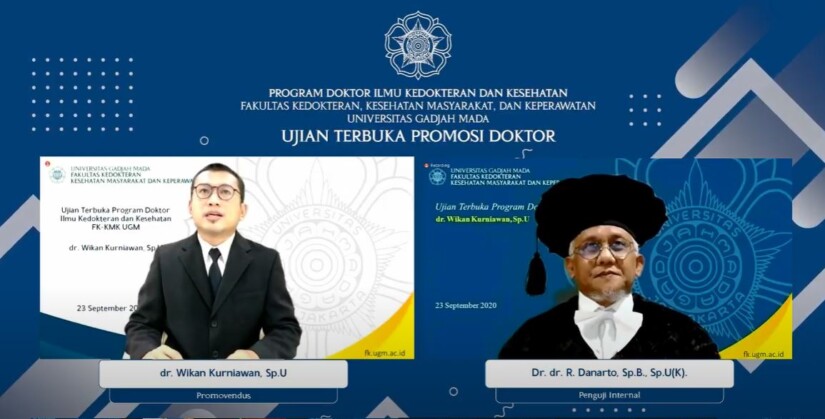
Urethral stricture is a condition marked by the decrease of tissue elasticity in the urethra so that the urethra’s lumen becomes tight and causes an obstruction that blocks urine flow. The incidence of urethral strictures in the world can only be estimated in a particular number. In the United States, the incidence of urethral strictures in men is the amount of 0.6 percent of the population at risk, or the equivalent of more than 5,000 hospitalized patients each year. Until now, surgeons have not been able to get the wanted results in their treatment notwithstanding the appropriate pre-operative and operative evaluations. Perendoscopic urethrotomy is considered a simple method and is initially an effective treatment for short strictures. However, the recurrence rate within one year is about 50 percent. Meanwhile, urethroplasty is the main therapy for long urethral stricture, but it is quite expensive.
dr. Wikan Kurniawan, Sp.U., as a Student of Doctoral Program in Medicine and Health, Faculty of Medicine, Public Health and Nursing (FKKMK) UGM, recently conducted a research to open up opportunities for finding therapy in urethral strictures by using Docetaxel and Captopril to lessen the risk of urethral stricture. He used 28 male New Zealand rabbits with urethral rupture for his research experiment by endoscopic resection under anesthetized conditions.
The study subjects were divided into five groups: the negative control group, the rupture + group without drugs, the rupture + captopril group, the rupture docetaxel group, and the rupture + Docetaxel + captopril group. Then, all rabbits received a water-soluble transurethral gel containing the drug according to their group for 28 days.
After the treatment period, rabbits that acquired 200 mg penthotal treatment then proceeded to real-time PCR and corpus spongiosum histology examinations. The results of TGF-β1 mRNA diagnosis in the drug-free + rupture group were higher than the negative control group, the Docetaxel + rupture group, and the docetaxel + captopril rupture group. There had no differences between MMP-1 mRNA diagnosis and other study groups. CTGF mRNA diagnosis in the rupture + group without drug was higher than the negative control group, the rupture + captopril group, the Docetaxel + rupture group, and the docetaxel + captopril rupture group.
The results showed that the composition of PAI-1 mRNA without the drug rupture group was lower than the negative control group and the docetaxel + rupture group. The drug-free rupture group’s lumen area was narrower than the negative control group and the captopril + rupture group. “The lumen perimeter of the rupture + group without drugs was shorter than the negative control group, the rupture + captopril group,” he said.
Moreover, the rupture + group’s basal membrane perimeter without drug was shorter than the negative control group, the rupture + captopril group, the rupture + Docetaxel group. The area bounded by the basement membrane of the rupture group + without drug was smaller than that of the negative control. The central perimeter length also did not any difference in all study groups. “The epithelial area did not differ from all study groups,” Wikan said.
He inferred that Docetaxel and captopril are promising agents to avoid the development of urethral strictures in anterior urethral rupture. However, he said it is necessary to conduct further research with many research subjects with a better design to be applied to humans according to the clinical trial stage guidelines.
Author: Gusti Grehenson
Translator: Natasa A


